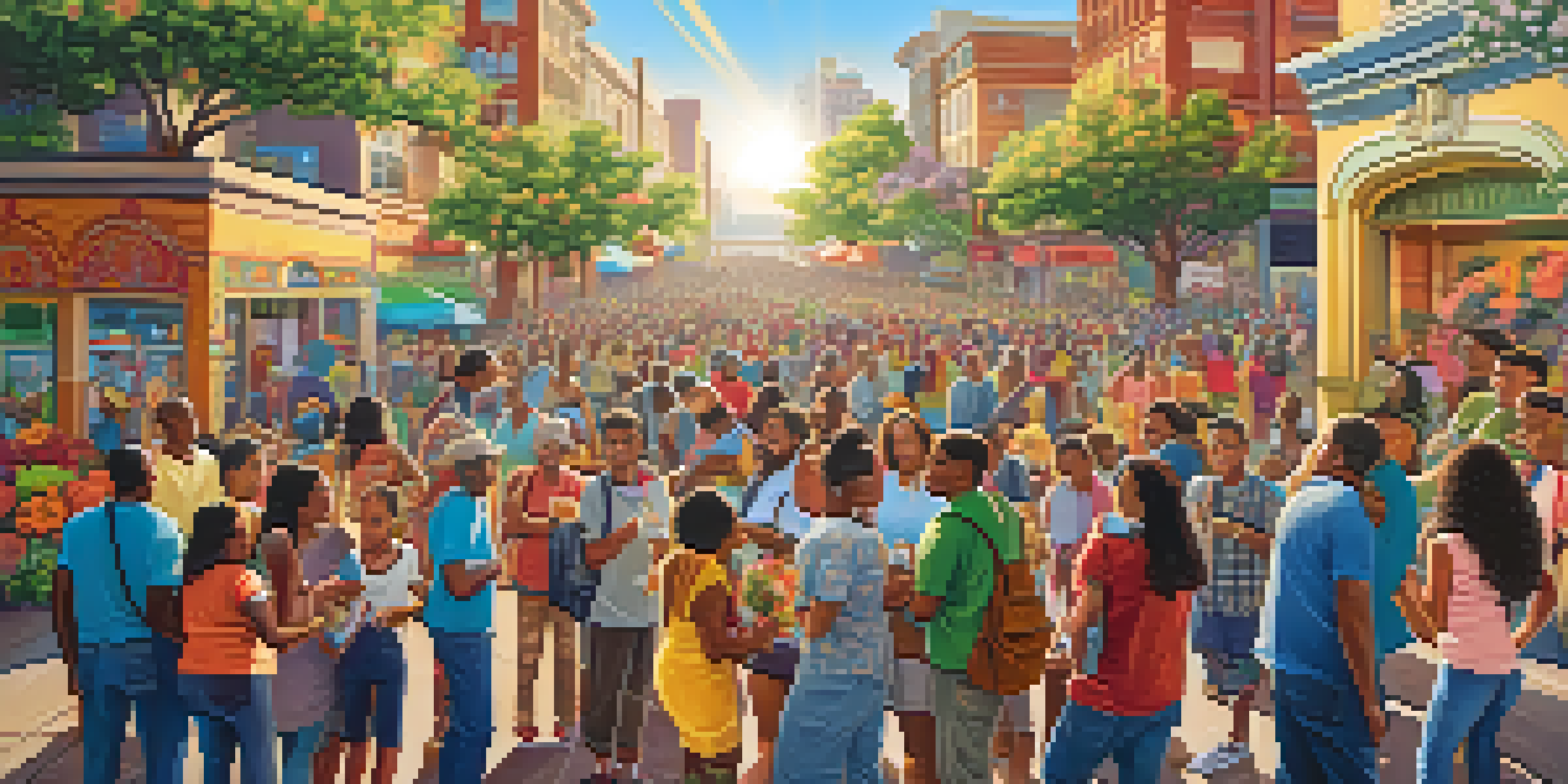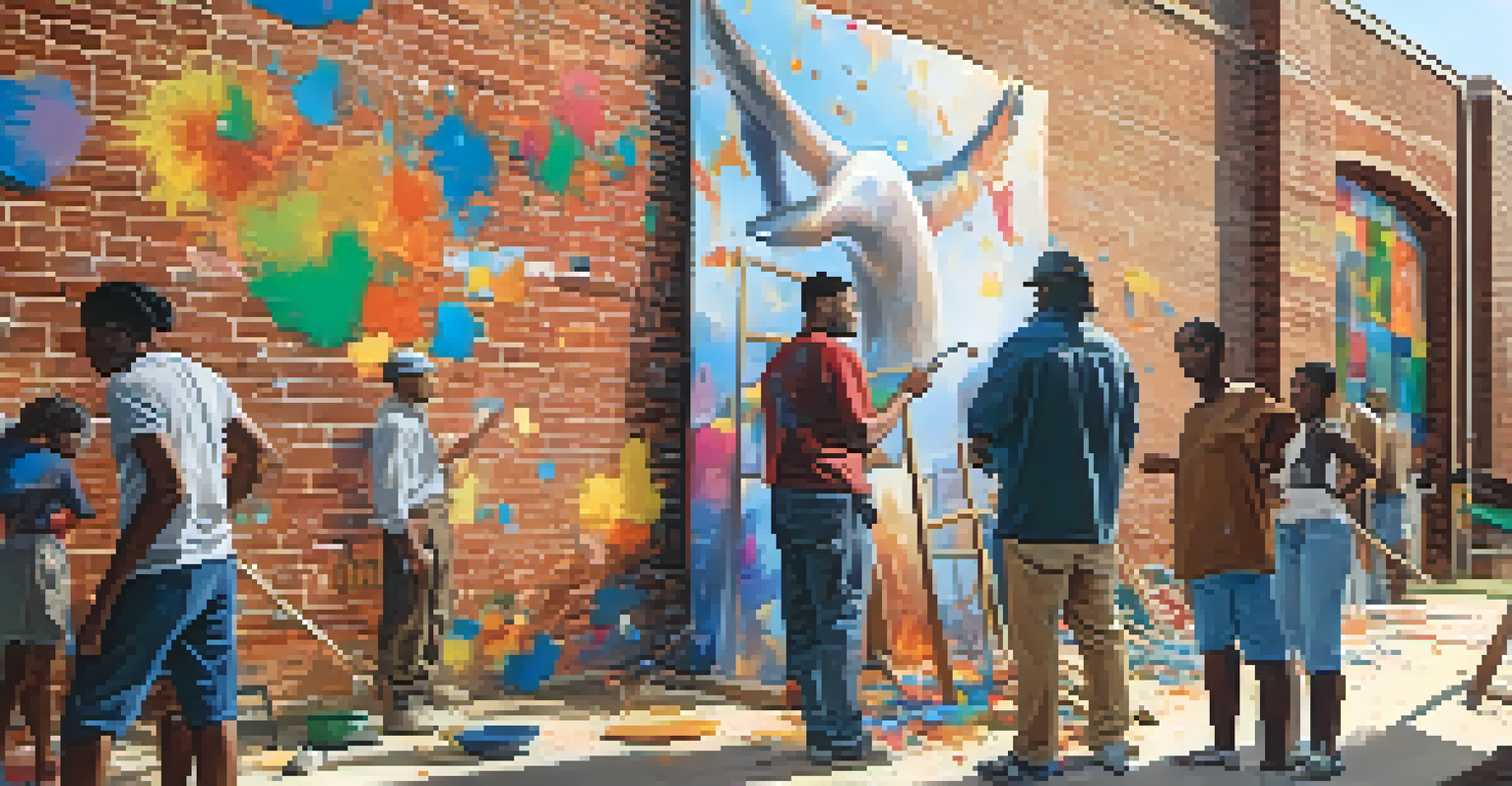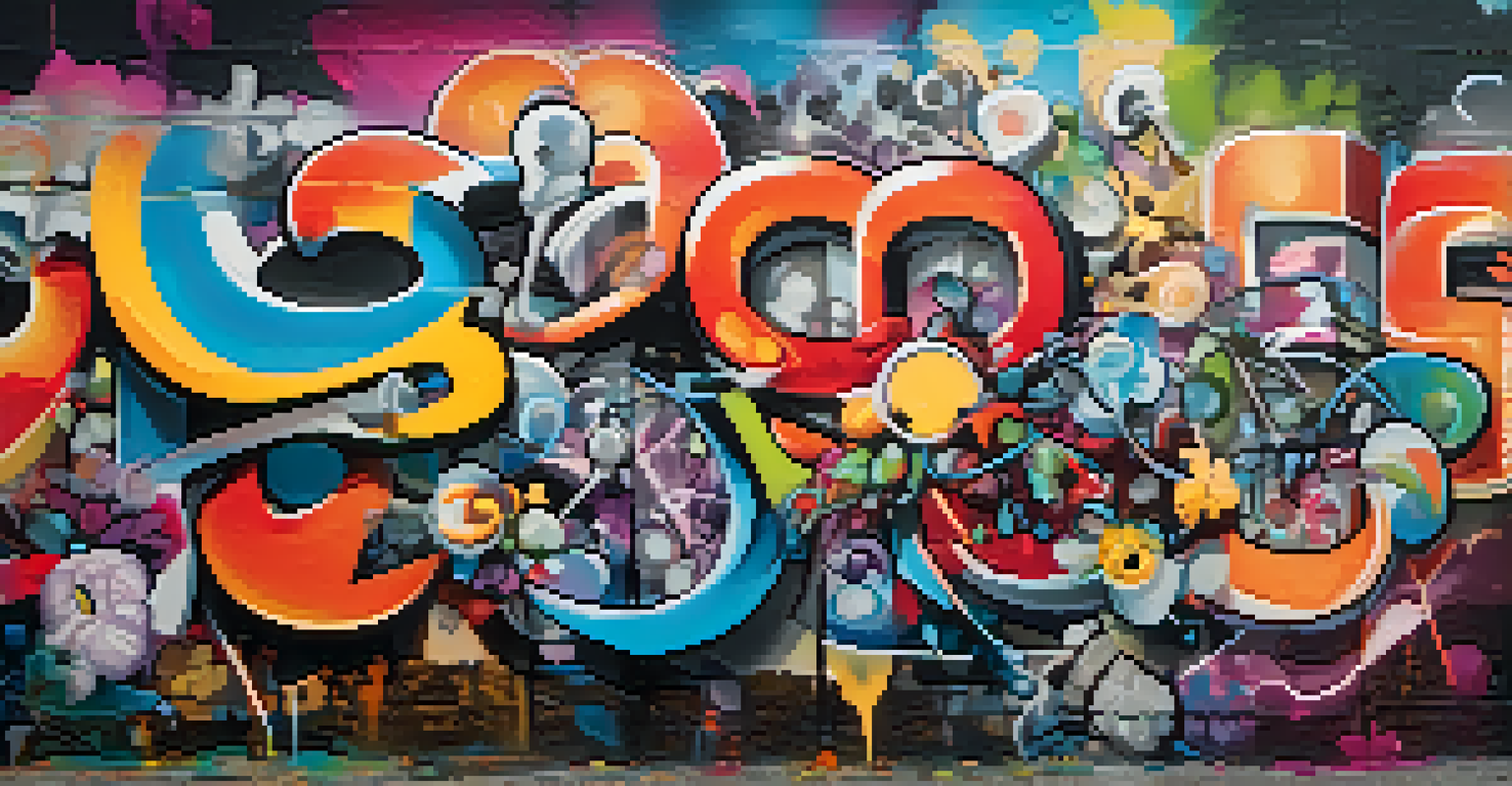Street Art: A Reflection of Urban Cultural Identity and Values

Understanding Street Art: More Than Just Graffiti
Street art is often mistaken for mere graffiti, but it encompasses a rich tapestry of artistic expression that goes beyond tags and spray paint. It can take many forms, from murals to stencils, each representing the artist's voice and the culture of their environment. While graffiti has a reputation for being vandalism, street art is increasingly recognized as a legitimate art form that challenges societal norms and provokes thought.
Art is a reflection of society, and street art reflects the voice of the community.
In urban landscapes, street art becomes a canvas for community storytelling. Artists use public spaces to communicate messages that resonate with local residents, often addressing social issues, cultural identity, and political commentary. This transformation of public spaces into platforms for artistic expression helps to foster a sense of belonging and pride within communities.
As cities evolve, street art continues to play a crucial role in shaping urban identity. By reflecting the struggles and triumphs of local populations, it creates a dialogue between the past and present, making it an essential component of the urban cultural narrative.
The Role of Community in Shaping Street Art
Community involvement is at the heart of street art's evolution. Local artists often collaborate with residents to create pieces that resonate with their lived experiences. This collaborative spirit not only enhances the authenticity of the artwork but also builds connections among community members, fostering a shared sense of identity.

Moreover, street art can serve as a response to gentrification and urban development. As neighborhoods change, artists may use their work to comment on or resist these transformations, highlighting the voices of those who may feel displaced. This dynamic interplay between art and community reflects the ongoing dialogue about urban identity and values.
Street Art as Community Voice
Street art serves as a powerful medium for local storytelling, addressing social issues and fostering a sense of belonging.
Ultimately, when communities embrace street art, they cultivate an environment where creativity thrives. This acceptance encourages new artists to emerge, ensuring that the cultural narrative remains vibrant and inclusive.
Street Art as a Medium for Social Commentary
Many street artists leverage their work to address pressing social issues, making their art a powerful form of activism. For example, murals can depict themes such as inequality, climate change, or racial justice, sparking conversations that might otherwise go unnoticed. This blending of art and activism not only raises awareness but also inspires action within the community.
Street art is a powerful form of activism that can provoke thought and inspire change.
One notable example is the work of artists like Banksy, whose pieces often challenge societal norms and provoke thought about contemporary issues. His art has become synonymous with social critique, demonstrating how street art can serve as both a reflection of and a catalyst for change. Through such works, artists invite the public to engage with critical conversations in an accessible way.
By transforming public spaces into forums for dialogue, street art cultivates a culture of awareness and empathy. It encourages individuals to reflect on their values and the world around them, creating a ripple effect of understanding and action.
The Impact of Technology on Street Art
In the digital age, technology has significantly influenced the evolution of street art. Social media platforms enable artists to showcase their work to a global audience, allowing for broader recognition and appreciation. This connectivity not only fosters a diverse artistic community but also inspires collaboration across geographical boundaries.
Additionally, technology has introduced new tools and techniques that artists can utilize. From augmented reality installations to digital projections, the possibilities for expression have expanded, allowing artists to experiment and push the boundaries of traditional street art. These innovations keep the art form fresh and relevant in an ever-changing urban landscape.
Art and Activism Unite
Many street artists use their work to tackle pressing social issues, blending art with activism to inspire community engagement.
As a result, street art is no longer confined to the physical realm; it now exists in a virtual space, reaching audiences far beyond its original location. This shift has transformed how communities engage with street art, further solidifying its role as a reflection of urban cultural identity.
Street Art and Urban Revitalization
Street art has the potential to revitalize urban areas, breathing new life into neglected spaces. By transforming dull walls into vibrant canvases, artists can attract attention and encourage community engagement. This beautification often leads to increased foot traffic, which can benefit local businesses and contribute to economic growth.
Moreover, cities like Berlin and Melbourne have recognized the value of street art in urban planning. Initiatives that support local artists can turn underutilized areas into cultural hubs, fostering a sense of community pride and ownership. These revitalized spaces often become landmarks, drawing visitors and helping to define the city’s unique character.
Through these efforts, street art becomes a vital component of urban development, creating a more inclusive and dynamic environment for residents and visitors alike. It showcases the creativity of the community while reinforcing a collective identity.
Challenges Faced by Street Artists
Despite its many benefits, street art is not without its challenges. Many artists face legal issues surrounding the placement of their work, as property owners and city officials may view it as vandalism. This ongoing tension often forces artists to navigate a complex landscape of permission and risk, which can hinder their creative expression.
Additionally, the commercialization of street art poses another dilemma. As it gains mainstream recognition, some artists struggle to maintain their original intent amidst rising demand and market pressures. This commercialization can lead to a dilution of the art's social messages, as pieces are created to cater to a broader audience rather than reflect the community's values.
Technology Transforms Street Art
The digital age has expanded street art's reach and techniques, allowing for greater visibility and innovative expressions.
Ultimately, street artists must balance their desire for creative freedom with the realities of the urban environment. By addressing these challenges, they can continue to contribute meaningfully to the cultural narrative of their cities.
The Future of Street Art in Urban Culture
As urban landscapes continue to evolve, the future of street art remains bright and promising. With growing acceptance and appreciation for this art form, it is poised to play an even more significant role in shaping cultural identity. Artists are likely to explore new themes and techniques, ensuring that street art stays relevant and impactful.
Moreover, the integration of street art into urban planning initiatives can further enhance its visibility and accessibility. By collaborating with local governments and organizations, artists can create works that reflect the community's values while fostering a sense of pride and ownership among residents.

In this way, street art will continue to be a vital part of urban culture, serving as a mirror of society's values and a catalyst for change. As communities embrace this vibrant art form, they will undoubtedly strengthen their cultural identity and the narratives that define them.